System: Golden Meadow
System ID: AA608G
County: Pierce County
A printable version of this report ![]() is also available.
is also available.
About Your Water Quality
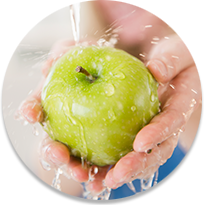 Washington Water is committed to being a leader in providing communities and customers with traditional and innovative utility services. Washington Water is proud of its service record and is staffed with courteous and knowledgeable water professionals who are dedicated to meeting your needs. While we are proud of our past record, we continually strive to improve upon the quality of services we provide to you, our valued customer.
Washington Water is committed to being a leader in providing communities and customers with traditional and innovative utility services. Washington Water is proud of its service record and is staffed with courteous and knowledgeable water professionals who are dedicated to meeting your needs. While we are proud of our past record, we continually strive to improve upon the quality of services we provide to you, our valued customer.
This 2021 Drinking Water Report is your annual update on the quality and safety of your drinking water. It includes the most recent water quality results through the monitoring period ending December 31, 2021, in accordance with state and federal regulations (not all testing is required every year). This report also provides access through references and telephone numbers to source water assessments, health effects information, and other water system topics. This allows you to make personal health-based decisions regarding your drinking water consumption and become more involved in decisions which may affect your health.
Most importantly, this report shows that your drinking water source meets all primary and secondary EPA and Department of Health standards.
We hope you find this information helpful.
Your Water System
Where Your Water Comes From
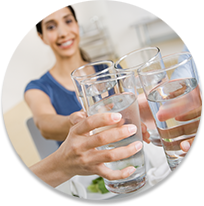 Your water comes from a single well (groundwater). This new deeper well (318 feet deep) was drilled in 2016 and placed in service in January 2017. Well #1 (136 feet deep) was permanently removed from service at that time due to increasing nitrate, approaching the maximum permissible level of 10 ppm in drinking water. Please see pages 6 and 10 for additional information on nitrate.
Your water comes from a single well (groundwater). This new deeper well (318 feet deep) was drilled in 2016 and placed in service in January 2017. Well #1 (136 feet deep) was permanently removed from service at that time due to increasing nitrate, approaching the maximum permissible level of 10 ppm in drinking water. Please see pages 6 and 10 for additional information on nitrate.
Your water is not treated (no chlorination, filtration, pH adjustment, etc.).
Source Water Protection Information
Drinking water comes from groundwater (wells and springs) and surface water (rivers, lakes, streams). Protecting these drinking water sources is key to sustaining safe drinking water supplies for this and future generations.
What you can do to protect source water:
- Ensure that your septic system is properly maintained.
- Use chemical fertilizers and pesticides sparingly, if at all.
- Don't dump any hazardous waste on the ground. This includes: motor oil, pesticides, paint or paint cans, mothballs, flea collars, household cleaners, medicines, etc.
Check the SWAP information for your water system:
The Washington State Department of Health Office of Drinking Water has compiled Source Water Assessment Program (SWAP) data for all community water systems in Washington. A source water assessment includes:
- A delineation (definition) of the source water protection area,
- An inventory of potential sources of contamination, and
- A susceptibility determination (how susceptible the source is to contamination).
An interactive map with data for your water system is available at: fortress.wa.gov/doh/swap/
Contact Us
If you have any questions, suggestions, or concerns, please contact our Customer Service Center, either by phone at (877) 408-4060 or through the Contact Us link.
Cross-Connection Control
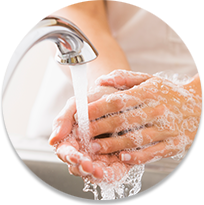 To ensure that the high-quality water we deliver is not compromised in the distribution system, Washington Water has a robust cross-connection control program in place. Cross-connection control is critical to ensuring that activities on customers' properties do not affect the public water supply. Our cross-connection control specialists ensure that all of the existing backflow prevention assemblies are tested annually, assess all connections, and enforce and manage the installation of new commercial and residential assemblies.
To ensure that the high-quality water we deliver is not compromised in the distribution system, Washington Water has a robust cross-connection control program in place. Cross-connection control is critical to ensuring that activities on customers' properties do not affect the public water supply. Our cross-connection control specialists ensure that all of the existing backflow prevention assemblies are tested annually, assess all connections, and enforce and manage the installation of new commercial and residential assemblies.
Backflow can occur when certain pressure conditions exist either in our distribution system or within the customer's plumbing, so our customers are our first line of defense. A minor home improvement project—without the proper protections—can create a potentially hazardous situation, so careful adherence to plumbing codes and standards will ensure the community's water supply remains safe. Please be sure to utilize the advice or services of a qualified plumbing professional.
Many water-use activities involve substances that, if allowed to enter the distribution system, would be aesthetically displeasing or could even present health concerns. Some common cross-connections are:
- Garden hoses connected to a hose bib without a simple hose-type vacuum breaker (available at a home improvement store)
- Improperly installed toilet tank fill valves that do not have the required air gap between the valve or refill tube
- Landscape irrigation systems that do not have the proper backflow prevention assembly installed on the supply line
The list of materials that could potentially contaminate the water system is vast. According to the EPA, a wide variety of substances have contaminated drinking water systems throughout the country as a result of poor cross-connection control. Examples include:
- Antifreeze from a heating system
- Lawn chemicals from a garden hose or sprinkler head
- Blue water from a toilet tank
- Carbonated water from a soda dispenser
Customers must ensure that all plumbing is in conformance with local plumbing codes. Additionally, state law requires certain types of facilities to install and maintain backflow prevention assemblies at the water meter. Washington Water's cross-connection control staff will determine whether you need to install a backflow prevention assembly based on water uses at your location.
Possible Contaminants
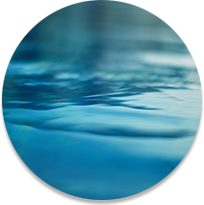 Drinking water, including bottled water, may reasonably be expected to contain at least small amounts of some contaminants.
Drinking water, including bottled water, may reasonably be expected to contain at least small amounts of some contaminants.
The presence of contaminants does not necessarily indicate that the water poses a health risk.
More information about contaminants and potential health effects can be obtained by calling the EPA's Safe Drinking Water Hotline at (800) 426-4791.
Common sources of drinking water—both tap and bottled water—include rivers, lakes, streams, ponds, and reservoirs (surface water), and wells and springs (groundwater). As water travels over the surface of the land or through the ground, it dissolves naturally-occurring minerals and, in some cases, radioactive material. Water can also pick up substances resulting from the presence of animals or from human activity.
Contaminants that may be present in source water include
Microbial contaminants, such as viruses, parasites, and bacteria, which may come from sewage treatment plants, septic systems, agricultural livestock operations, and wildlife.
Inorganic contaminants, such as salts and metals, which can be naturally-occurring or result from urban stormwater runoff, industrial or domestic wastewater discharges, oil and gas production, mining, or farming.
Pesticides and herbicides, which may come from a variety of sources such as agriculture, urban stormwater runoff, and residential uses.
Radioactive contaminants, which can be naturally-occurring or be the result of oil and gas production and mining activities.
Organic chemical contaminants, including synthetic and volatile organic chemicals, which are byproducts of industrial processes and petroleum production, and can also come from gas stations, urban stormwater runoff, and septic systems.
In order to ensure that tap water is safe to drink, the Washington State Department of Health (DOH) and EPA prescribe regulations that limit the amount of certain contaminants in water provided by public water systems. The Food and Drug Administration (FDA) and Washington State Department of Agriculture regulations establish limits for contaminants in bottled water that must provide the same protection for public health.
Vulnerable Populations
Some people may be more vulnerable to contaminants in drinking water than the general population. Immuno-compromised people such as those with cancer undergoing chemotherapy, those who have undergone organ transplants, people with HIV/AIDS or other immune system disorders, some elderly, and infants can be particularly at risk from infections. These people should seek advice about drinking water from their health care providers. EPA/CDC guidelines on appropriate means to lessen the risk of infection by Cryptosporidium and other microbial contaminants are available from the Safe Drinking Water Hotline at (800) 426-4791.
Key Definitions
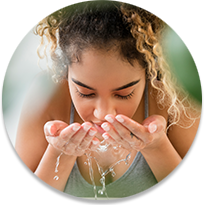 Action level (AL): The concentration of a contaminant which, when exceeded, triggers treatment or other requirements which a water system must follow.
Action level (AL): The concentration of a contaminant which, when exceeded, triggers treatment or other requirements which a water system must follow.
Lead and Copper 90th Percentile Value: Out of every 10 homes sampled, 9 were at or below this level. This must be less than or equal to the AL or additional steps must be taken.
Maximum containment level (MCL): The highest level of a contaminant allowed in drinking water. MCLs are set as close to the MCLGs as feasible using the best available treatment technology.
Maximum contaminant level goal (MCLG): The level of a contaminant in drinking water below which there is no known or expected risk to health. MCLGs allow for a margin of safety.
µmhos/cm: A measure of specific conductance.
N/A: Not applicable.
Not detected (ND): The result is less than the SDRL.
Nephelometric turbidity unit (ntu): A measure of water clarity.
ppb: Parts per billion (µg/L, micrograms per liter)
ppm: Parts per million (mg/L, milligrams per liter)
State detection reporting limit (SDRL): The minimum reportable detection of an analyte as established by DOH. If the test result is less than the SDRL, the contaminant is considered to be not detected.
Secondary maximum contaminant level (SMCL): These standards are developed as guidelines to protect the aesthetic qualities of drinking water and are not health based.
Treatment technique (TT): A required process intended to reduce the level of a contaminant in drinking water.
Source Codes
The source codes indicate major sources of contaminants in drinking water.
- CH: Corrosion of household plumbing systems
- EN: Erosion of natural deposits
- LN: Leaching from natural deposits
- LX: Leaching from septic tanks
- NAT: Substances that form natural deposits
- NOM: Naturally occurring organic materials
- RF: Runoff from fertilizer use
- RLN: Runoff/leaching from natural deposits
- RS: Soil runoff
- SEA: Seawater influence
- SEW: Sewage
- WI: Industrial wastes
Equipment in water-testing laboratories can detect constituents as small as 1 part per trillion. That is equivalent to 1 inch over 15 million miles
2021 Water Quality
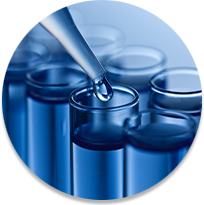 Your water is tested for more than 150 contaminants for which state and federal standards have been set.
Your water is tested for more than 150 contaminants for which state and federal standards have been set.
Tables 1 & 2 list all primary contaminants that were detected at or above the state detection reporting limit SDRL, along with their respective MCLs. Primary MCLs primary standards protect public health by limiting the levels of these contaminants in drinking water.
Table 3 lists secondary contaminants of interest to many consumers, as well as any unregulated contaminant detections. Secondary contaminants have no known health effects but can affect the aesthetic properties of water taste, odor, and appearance. Unregulated contaminants are those for which EPA has not established drinking water standards. The purpose of unregulated contaminant monitoring is to help EPA determine their occurrence in drinking water and potential need for future regulation.
Table 1: Primary Contaminants |
||||||||
| Inorganic Chemicals | Year Tested | Units | MCL | MCLG | Your Water | Violation? | Source | |
| Average | Range | |||||||
| Nitrate1 | 2021 | ppm | 10 | 10 | 4.4 | 4.3–4.7 | No | EN, LX, RF, SEW |
Table 2: Lead and Copper2 |
||||||||
| Primary Contaminants | Year Tested | Units | AL | 90th Percentile | Samples > AL | Violation? | Source | |
| Copper | 2021 | ppm | 1.3 | 0.12 | 0 of 6 | No | CH, EN | |
| Lead3 | 2021 | ppb | 15 | 11 | 1 of 6 | No | CH, EN | |
Table 3: Secondary and Unregulated Contaminants |
||||||||
| Secondary Contaminants | Year Tested4 | Units | SMCL | Your Water | Violation? | Source | ||
| Iron | 2019 | ppm | 0.3 | ND | No | LN, WI | ||
| Manganese | 2019 | ppm | 0.05 | ND | No | LN | ||
| Chloride | 2019 | ppm | 250 | ND | No | RLN, SEA | ||
| Sulfate | 2019 | ppm | 250 | ND | No | RLN, WI | ||
| Sodium5 | 2019 | ppm | N/A | 6.9 | No | EN, SEA | ||
| Hardness6 | 2019 | ppm | N/A | 64 | No | EN | ||
| Conductivity | 2019 | µmhos/cm | 700 | 160 | No | NAT, SEA | ||
| Turbidity | 2019 | NTU | N/A | 0.1 | No | RS | ||
| Color | 2019 | color units | 15 | ND | No | NOM | ||
| Unregulated Contaminants | Year Tested | Units | SMCL | Your Water | Violation? | Source | ||
| Lead7 | 2019 | ppb | N/A | ND | No | CH, EN | ||
| Copper | 2019 | ppm | N/A | ND | No | CH, EN | ||
1 Nitrate can be influenced by land use and surface activity upgradient of the aquifer and within the source's sanitary control area, and can vary seasonally in the groundwater. Monitoring is increased to quarterly if ½ MCL is exceeded. In 2021 the level of nitrate was just below ½ MCL for all four quarters. See Special Educational Information page on nitrate in drinking water, after the data tables.
2 Samples are collected at customer kitchen or bathroom taps. Residences considered to be at highest risk for corrosion are selected for sampling (i.e., those with lead and copper in internal plumbing, based on specific EPA tiering criteria and available home construction details from county web sites).The number of homes sampled is based on population served by the water system. This testing is done every three years.
3 One residence exceeded the lead action level during 2021.
4 Most recent testing done. This testing is done every three years.
5 The EPA recommends 20 ppm sodium as a level of concern for consumers who must restrict their dietary intake.
6 When reading the hardness value, 0–75 ppm is considered "soft" water, 75–150 ppm is "moderately hard," 150–300 ppm is "hard," and > 300 ppm is "very hard." Calcium carbonate is dissolved into the source water during corrosion control treatment, increasing the pH and hardness of the water, thereby reducing the water's corrosivity toward household copper plumbing. Hardness of the untreated water is 45–55 ppm.
7 Lead and copper are regulated at customer taps (see Table 2 for those results), not at the source, which is what these results represent. This is because lead and copper in drinking water do not typically come from the water source. They come from the plumbing that serves, or is inside, the customer's home, from corrosion of lead and copper-containing plumbing or fixtures, or the lead solder that connects copper pipes.
Revised Total Coliform Rule (RTCR)
 This year's report reflects changes in drinking water regulatory requirements that took effect in 2016. Effective April 1, 2016, the Revised Total Coliform Rule (RTCR) replaced the Total Coliform Rule that had been in place for public water systems since 1989. The purpose of the revised rule remains the same as the original rule, to protect public health by ensuring the integrity of the drinking water distribution system and by monitoring for the presence of microorganisms (i.e. total coliform and E. coli bacteria).
This year's report reflects changes in drinking water regulatory requirements that took effect in 2016. Effective April 1, 2016, the Revised Total Coliform Rule (RTCR) replaced the Total Coliform Rule that had been in place for public water systems since 1989. The purpose of the revised rule remains the same as the original rule, to protect public health by ensuring the integrity of the drinking water distribution system and by monitoring for the presence of microorganisms (i.e. total coliform and E. coli bacteria).
Under the RTCR, the presence of total coliform bacteria (E. coli-absent) is no longer considered a direct health threat. The maximum contaminant level (MCL) for total coliform has been eliminated. The presence of total coliform bacteria does, however, indicate that a pathway exists, or may exist, for contamination into the distribution system. The U.S. EPA anticipates even greater public health protection under the revised rule because it requires water systems to identify and fix problems that may directly or indirectly contribute to microbial contamination. It formalizes the process, requiring a qualified person to conduct a Level 1 Assessment (see definitions at right) when the system has greater than one routine coliform-positive sample in a calendar month. Any sanitary defects that are identified during the assessment must be corrected. Examples of ways that coliform can enter the system are: failure to disinfect properly after maintenance or repairs, main breaks, holes/gaps in storage tank joints and screens, loss of system pressure, cross-connections, biofilm accumulation in the distribution system, inadequate disinfectant residual (chlorinated systems), or sampling protocol errors.
The assessor records his or her findings and corrective actions onto an assessment form. The completed form must be submitted to the Washington State Department of Health (DOH) within 30 days of the treatment technique trigger (TTT), the new RTCR term for greater than one routine coliform-positive sample in a calendar month. A second TTT in a rolling 12-month period results in a more comprehensive Level 2 Assessment. A third TTT will likely result in DOH requiring permanent continuous chlorination (if the system is not already chlorinated).
Level 1 Assessment: a study of the water system to identify potential problems and determine (if possible) why total coliform bacteria have been found in the water system
Level 2 Assessment: a more detailed study of the water system to identify potential problems and determine (if possible) why total bacteria have been found in the water system more than once in a 12-month period, or why an E. coli MCL violation has occurred (if applicable)
For more information on the RTCR from DOH, visit: www.doh.wa.gov/Portals/1/Documents/Pubs/331-556.pdf.
Special Educational Information
Nitrate
The major sources of nitrates in drinking water are runoff from fertilizer use and leaking septic tanks. Nitrate in drinking water at greater than 10 ppm is a health concern for infants of less than six months of age because it can disrupt the blood's ability to carry oxygen ("blue baby syndrome"). Nitrate levels may rise quickly for short periods of time because of rainfall or agricultural activity.
You can help prevent groundwater contamination by having your septic tank checked periodically to make sure it is in good working order. Fertilize your lawn at the right time, pick the right product, and use the right amount. Wait until mid May or early June when heavy rains have passed so that less fertilizer will leach away. Use an organic or slow release fertilizer. When fertilizer nutrients are in slow release forms, they are available to plants over a longer period of time. This means that less nutrients are wasted or lost as pollutants.
About Lead
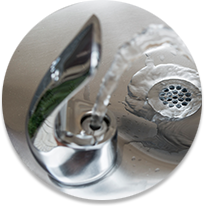 Washington Water is compliant with health and safety codes mandating use of lead-free materials in water system replacements, repairs, and new installations. We have no known lead service lines in our systems. We test and treat (if necessary) water sources to ensure that the water delivered to customer meters meets water quality standards and is not corrosive toward plumbing materials.
Washington Water is compliant with health and safety codes mandating use of lead-free materials in water system replacements, repairs, and new installations. We have no known lead service lines in our systems. We test and treat (if necessary) water sources to ensure that the water delivered to customer meters meets water quality standards and is not corrosive toward plumbing materials.
The water we deliver to your home meets lead standards, but what about your home's plumbing? In Washington state, lead in drinking water comes primarily from materials and components used for in-home plumbing (for example, lead solder used to join copper plumbing, and brass and other lead-containing fixtures). Therefore, the Lead and Copper Rule is a critical part of our water quality monitoring program, and we follow it completely. This rule requires us to test water inside a representative number of homes that have plumbing most likely to contain lead and/or lead solder. This test, along with other water quality testing, tells us if the water is corrosive enough to cause lead from home plumbing to leach into the water. If the Action Level (the concentration of a contaminant which, when exceeded, triggers action which a water system must follow before it becomes a health concern) is exceeded, either at a customer's home or system-wide, we work with the customer to investigate the issue. If the problem is system-wide, we will implement corrosion control treatment at the source before the lead levels create a health issue.
Elevated levels of lead, if present, can cause serious health problems, especially for pregnant women and children. If your home's plumbing contains lead piping or pipe fittings, lead solder, or brass fixtures that may contain lead, you can minimize the potential for lead exposure by flushing your tap for 30 seconds to two minutes before using water for drinking or cooking.
If you are concerned about lead in your water, you may wish to have your water tested by a certified lab. Information on lead in drinking water, testing methods, and steps you can take to minimize exposure is available from the Safe Drinking Water Hotline or at www.epa.gov/safewater/lead.
Results of our lead monitoring program, conducted in accordance with the Lead and Copper Rule, can be found in Water Quality Tables 2 and 3.
About Monitoring Waivers (reduced monitoring)
Organic Chemicals
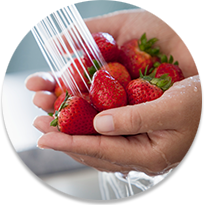 Drinking water sources are sampled and tested a minimum of every six to nine years for an array of organic chemicals including:
Drinking water sources are sampled and tested a minimum of every six to nine years for an array of organic chemicals including:
- Volatile organic chemicals (VOCs): Human-made chemicals that are used and produced in the manufacture of paints, pharmaceuticals, and refrigerants. Typical VOCs are components of petroleum fuels, paint thinners, and dry cleaning agents.
- Synthetic organic chemicals (SOCs): Human-made chemicals that are used as herbicides, pesticides ,and in the manufacture of plastics.
Sampling frequencies for these groups of organic chemicals can vary depending on the county in which your water system is located, whether the source has been granted a monitoring waiver, and whether there have been past detections of any of these organic contaminants.
Monitoring waivers are granted by the DOH and are based on a source's susceptibility rating (risk of contamination), water quality history, and information gathered from across the state.
If there were detections of organic contaminants obtained during the most recent round of compliance monitoring (2016–2021 for VOCs; 2013–2021 for SOCs), they are shown in the water quality data tables. If there are none reported in the tables, there were none detected.
Radioactive Contaminants
Drinking water sources are sampled and tested a minimum of every six years for radioactive contaminants (radium 228 and gross alpha). These contaminants can be naturally occurring or the result of oil and gas production and mining activities.
If there were any detections obtained during the most recent round of compliance monitoring (2016–2021), they are shown in the water quality data tables. If there are none reported in the tables, there were none detected.
Water-Use Efficiency
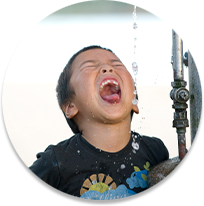 Water is a precious, limited resource. In the Pacific Northwest, drinking water for our growing population competes with other uses that include agriculture, industry, recreation, and maintaining an adequate stream flow for fish.
Water is a precious, limited resource. In the Pacific Northwest, drinking water for our growing population competes with other uses that include agriculture, industry, recreation, and maintaining an adequate stream flow for fish.
Washington Water strives to be a leader in the water industry, and we encourage our customers to be good stewards of our water resources. We monitor the amount of water we withdraw from aquifers in Washington, and track water losses along with water sold to our customers to ensure compliance.
Washington Water also continues to invest diligently in our infrastructure to reduce the amount of water lost to pipeline leaks and are updating our assessment of the impacts of climate change on water supply and demand. Using water wisely will ensure that we have enough water in dry years and for generations to come.
Water-use efficiency goals are established in accordance with WAC 246-290-830(6)(b).
Demand Goal
Washington Water's company-wide water demand goal is an annual customer consumption of less than 117,300 gallons (or 0.36 acre feet) per year, per equivalent residential unit. Washington Water monitors demand and encourages conservation through a variety of resources. Washington Water's Customer Service Department alerts customers with unusually high consumption, and provides 13 months of consumption history on billing statements to all customers. See the conservation page for more information about how you can make a difference.
Supply Goal
To control use of our groundwater sources, Washington Water established a supply goal to withdraw a maximum of 130,340 gallons (or 0.40 acre feet) per year, per equivalent residential unit. This goal is a measure of operational efficiency and adequate maintenance of pumping, treatment, and distribution systems. The difference between the supply and demand goals allows for a maximum of 10% total distribution system leakage use company-wide. Washington Water gauges and records monthly source production, and identifies treatment backwash and system flushing volumes to regularly assess supply-side conservation efficiencies. Washington Water also annually evaluates our systems' water main repair history and distribution system water losses to develop capital improvement projects for water main replacements. See the Capital Improvement Program page for current and recently completed main replacement projects.
Company-Wide 2021 Water Use Results
- Total production: 2.141 billion gallons
- Total accounted usage: 1.883 billion gallons
- Total distribution system leakage: 12.0%
- Total produced: 124,561,490 gallons
- Metered sold: 121,322,142 gallons
- Unidentified losses: 3,239,348 gallons
- Distribution system loss: 3%
Thank you
 Thanks for taking the time to learn more about your water quality!
Thanks for taking the time to learn more about your water quality!
Important Contact Information
Washington Water Service
P.O. Box 336
Gig Harbor, WA 98335-0336
Office: (253) 851-4060
Toll Free: (877) 408-4060
Shawn O'Dell
Operations Manager
Washington State Department of Health
Northwest Drinking Water Operations
20425 72nd Ave South
Building 2, Suite 310
Kent, WA 98032-2388
(253) 395-6750
Our Water Quality Commitment
You Can Count on Washington Water Employees to...
- Provide you with the highest quality water possible
- Sample, test, and treat if needed your water on a regular basis
- Work diligently to meet every water quality standard on every system, every day
- Maintain the water distribution system reliability
- Provide you with the highest level of customer service possible


